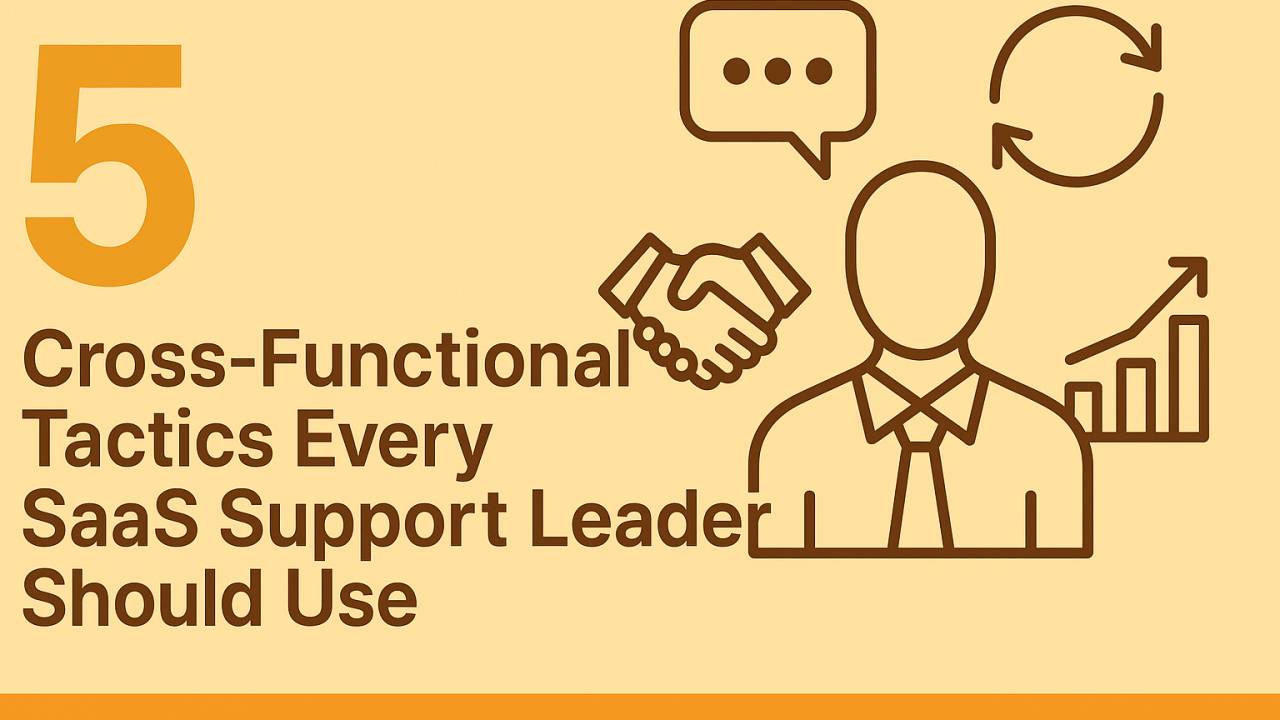5 Cross-Functional Tactics Every SaaS Support Leader Should Use

🔥 Moving from escalation manager to strategic partner starts with deliberate, cross-functional action.
Support organizations in SaaS companies are often treated like the emergency room—always on call, always reacting. But what if your support org could move upstream? What if your team wasn’t just solving problems, but actively shaping the product and customer journey?
Too often, support leaders are so focused on service-level agreements and hiring to meet ticket volumes that they miss the chance to influence product design, sales strategy, and customer success outcomes. The irony? Support sees customer pain before anyone else.
If you're a Director or Head of Support in SaaS, these five cross-functional tactics will help you grow influence beyond the queue—and they’re built for slow, intentional growth that scales sustainably.
1. 💬 Turn Escalation Debriefs Into Product Feedback Loops
Every major support escalation reveals something deeper—missing documentation, UX friction, or unexpected edge cases. Don’t let that insight die in a Slack thread or internal post-mortem.
✅ Tactic: Formalize a monthly escalation review with product and engineering leads. Highlight not just the fix, but the upstream signals and downstream impact.
💡 Pro tip: Keep a “customer friction log” updated by senior support engineers. This log becomes a living artifact to influence roadmap prioritization.
2. 🔄 Embed Support Reps Into Product Development Rituals
When support is only invited after things go wrong, it reinforces a reactive culture. Instead, find low-friction ways for support leaders to participate earlier in the cycle.
✅ Tactic: Assign a senior TSE to attend sprint reviews, alpha testing, or customer advisory board debriefs. Rotate reps quarterly to avoid burnout and spread insight.
💡 Why it works: Support brings context that analytics can’t—like emotional triggers, workaround behavior, or usage gaps that won’t show in the data.
3. 🤝 Co-Design Onboarding With Customer Success
First impressions are made in onboarding—but too often, the knowledge from support teams isn’t included in onboarding design.
✅ Tactic: Work with CS to redesign onboarding guides using the “Top 10 Support Traps” your team sees in the first 30 days of customer activity.
💡 Bonus move: Track whether accounts that onboard with this support-informed process show fewer tickets and escalations in the first 90 days.
4. 📈 Create Support-Centric Metrics That Influence Strategy
Traditional support KPIs—like first response time—don’t tell the full story. To influence strategy, you need metrics that cross boundaries.
✅ Tactic: Track and report on things like:
- % of product roadmap influenced by support feedback
- Escalation rate by feature area
- Customer churn tied to unresolved support issues
💡 Why it matters: These metrics position support as a strategic function, not just a cost center.
5. 🌱 Scale Cross-Functional Culture, Not Just Headcount
When your company is growing fast, it’s tempting to throw bodies at the problem. But sustainable support leadership requires culture that scales.
✅ Tactic: Build intentional growth paths—mentorship programs, feedback training, knowledge ownership—for your support team to become trusted internal consultants.
💡 Idealistic but true: A smaller, empowered support team that collaborates deeply across functions will outperform a bloated one every time.
🚀 The Takeaway
Cross-functional leadership isn’t a promotion. It’s a posture.
SaaS support leaders who invest in slow, intentional influence—through repeatable, practical tactics—can transform their teams from ticket-takers to strategic partners. Start with just one of these five tactics. Then watch how the rest of the organization starts seeing your team not as the end of the customer journey, but the glue that holds it all together.

